Late in 2013 I went on a pilgrimage to Sayes Court, at Deptford in East London. I have become familiar with the voice John Evelyn while I researched his major work Sylva, in readiness for my own book The New Sylva, to be published by Bloomsbury in April 2014. My book concentrates on Evelyn’s influence on the management of trees for the forest and orchard, and given the great scope of these subjects, I did not have space to dwell much on another of Evelyn’s great achievements: his gardens at Sayes Court. I thought it fitting to visit the place that he made his home on return to London after leaving the country during the English Civil War, and which made him a celebrated name in seventeenth century London.
A brief history
During the Interregnum, Evelyn travelled Europe, settling longest in Paris where he met Mary Browne, daughter and heir of Sir Richard Browne; English ambassador to the court of France. He married Mary in 1647, and four years later in 1651 Evelyn returned to Britain to live at the Browne family home, Sayes Court, opposite the Royal dockyards at Deptford.
Evelyn obtained a 99 year lease on the property from Charles II, and transformed the gardens into one of the most celebrated and influential gardens of the seventeenth century. It included miles of hedges, an ornamental lake with an island, a summer-house, orchards, terraces and avenues. The people of London flocked to visit.
In 1694, Evelyn left Sayes Court to move back to his ancestral home at Wotton in Surrey. Thereafter, a series of tenants soon led to the demise of the spectacular gardens. The first, Captain Benbow who took a three-year lease on the property, caused Evelyn to write in his diary: “the mortification of seeing everyday much of my former labours and expenses there impairing”. But worse was yet to come. Tsar Peter I of Russia was lent Sayes Court by William III for just three months and such was the dereliction caused by his tenancy, that the Treasury had to pay compensation.
The garden was broken up during the 18th century. Late on in the 19th century, Octavia Hill was approached by William John Evelyn (1822-1908), hoping that the property could be owned by the public. Together with Robert Hunter, she went on to form the National Trust but unfortunately its formation came too late to protect their inspiration; Sayes Court.
During the twentieth century a large part of the site was purchased by the War Department and bombs fell nearby, including a V-1 flying bomb, which destroyed a nearby Victorian terrace. After the second world war a part of the site was redesigned as a children’s playground including a swimming pool.
Sayes Court today
A tiny fragment of Evelyn’s original garden survives today at Sayes Court Garden, in the Borough of Lewisham. Nearby, despite a ‘protected wharf status’ to other parts of the original site, a Chinese investment holding company has applied for planning permission to build residential and commercial properties. Local people have opposed these plans. In late 2013, the site was added to the World Monuments Fund watchlist for 2014.
Visiting Sayes Court Garden
I travelled via the Thames on the Thames Clipper alighting at Greenwich Pier, next to the National Maritime Museum. From there it is just a one mile (25 minute) walk, heading west along the south bank of the Thames.
Soon, evidence that you are on the right track is apparent as you walk along Evelyn Street. Turning onto Sayes Court Street, the gates of the park become visible in the near distance, while underfoot, great cobbles in the street conjure up times when it would have been busy with people.
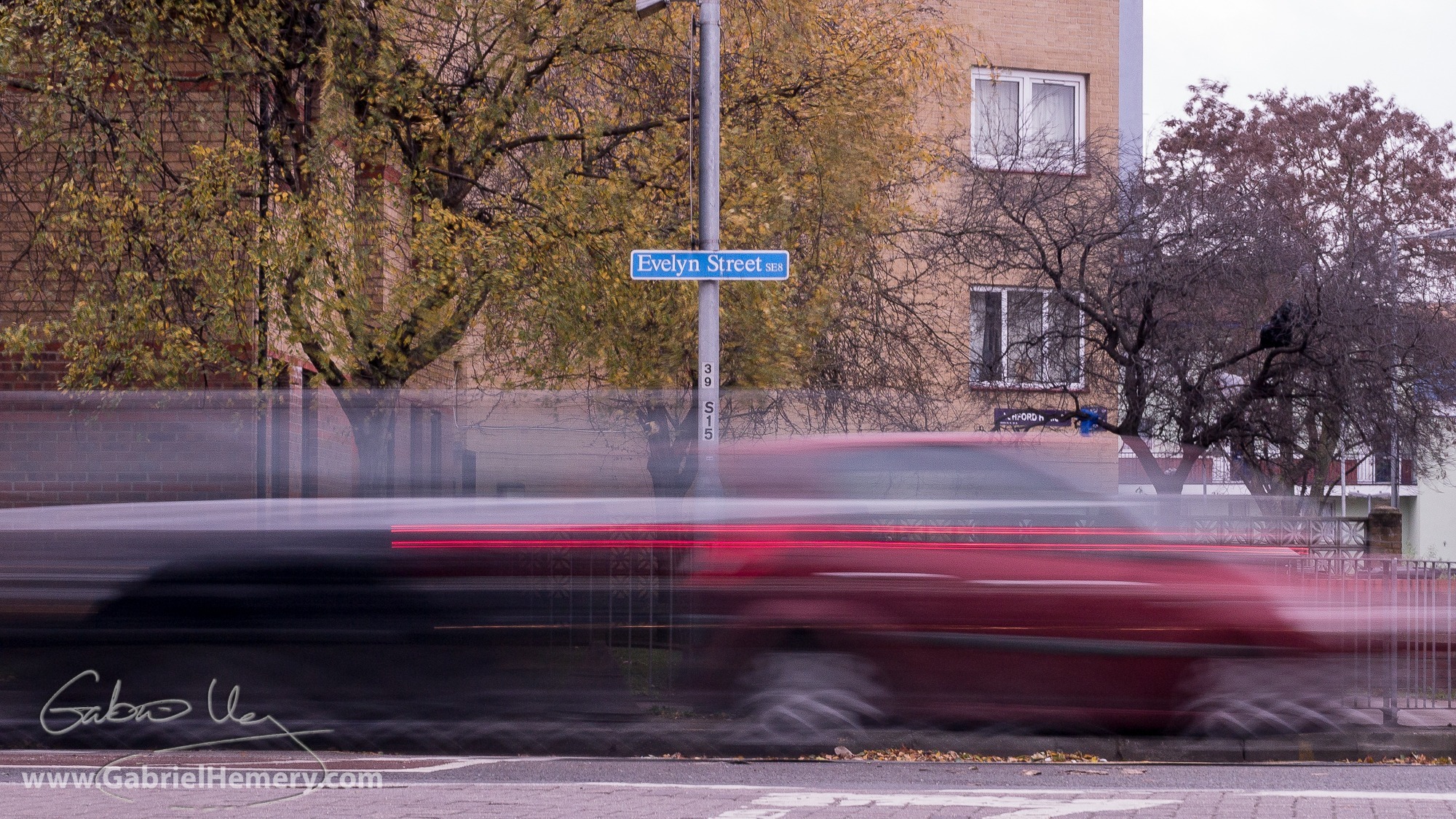
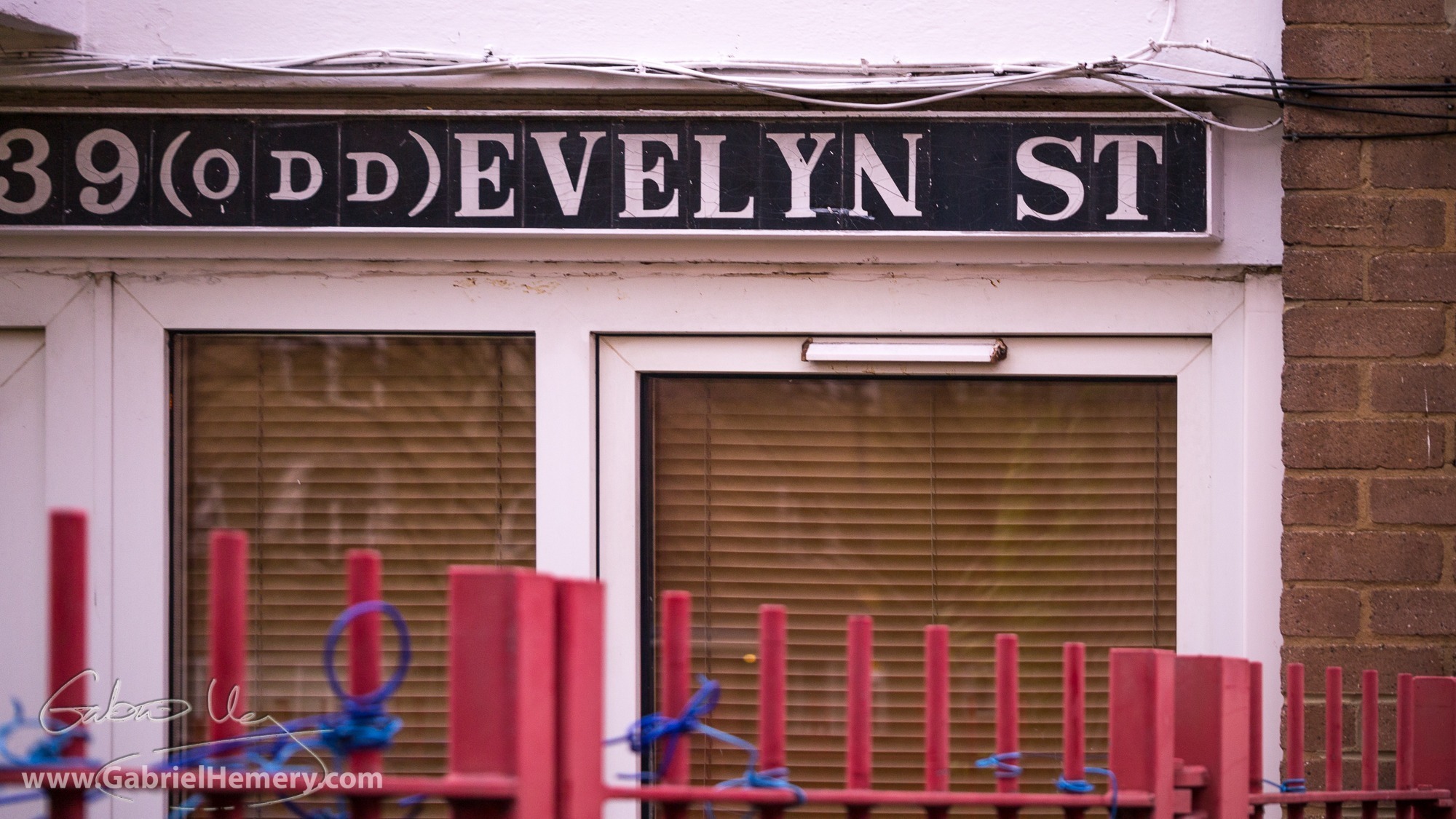

I was surprised by the beautifully designed entrance gates to the park from Sayes Court Street, featuring a lovely mulberry stem, leaf and fruit design. Beyond, in the tiny park, some majestic London plane trees dominate.
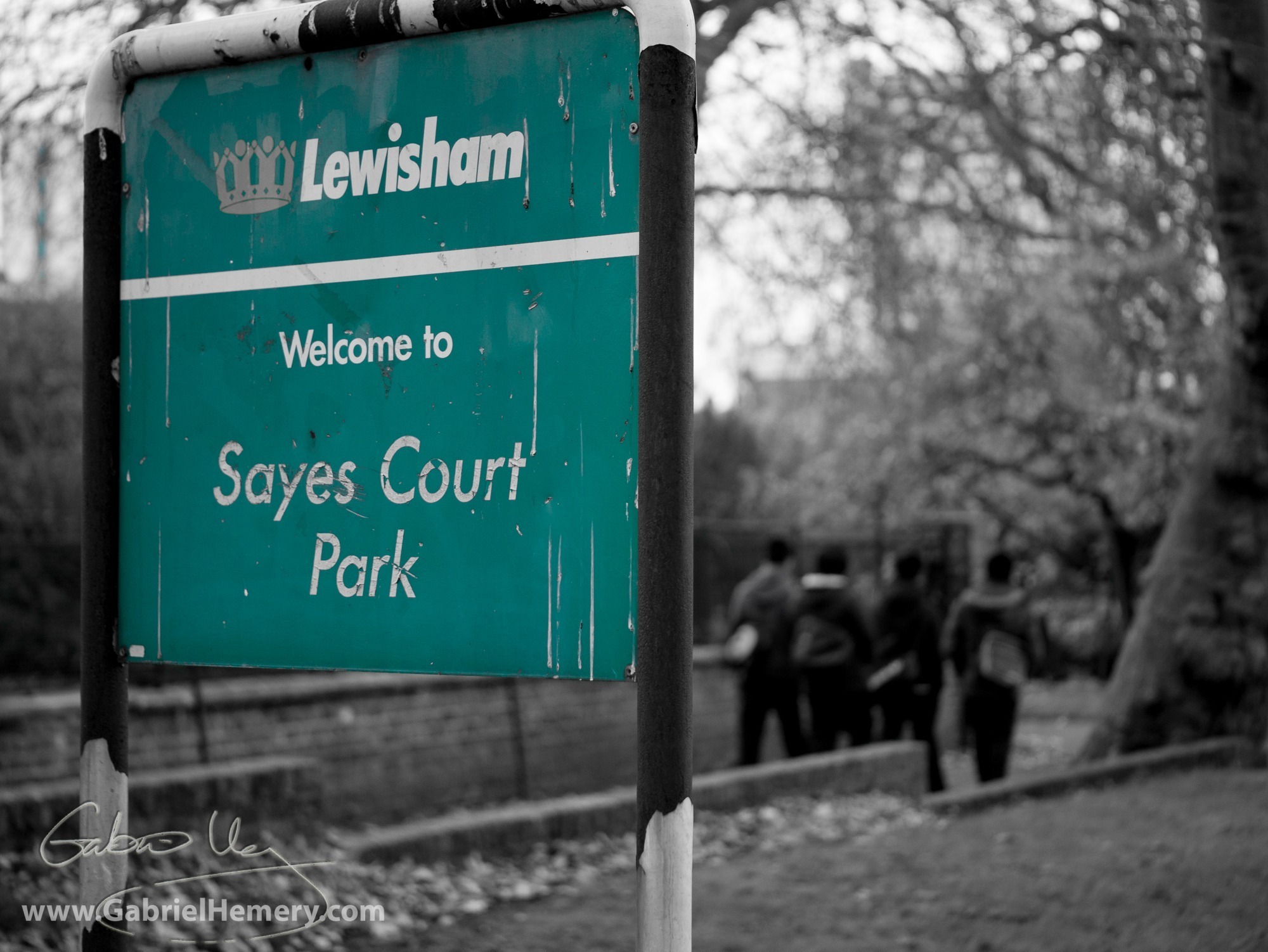
The park itself is quite well cared for, being clear of litter and not too much sign of dereliction, although the entrance sign had seen better days.
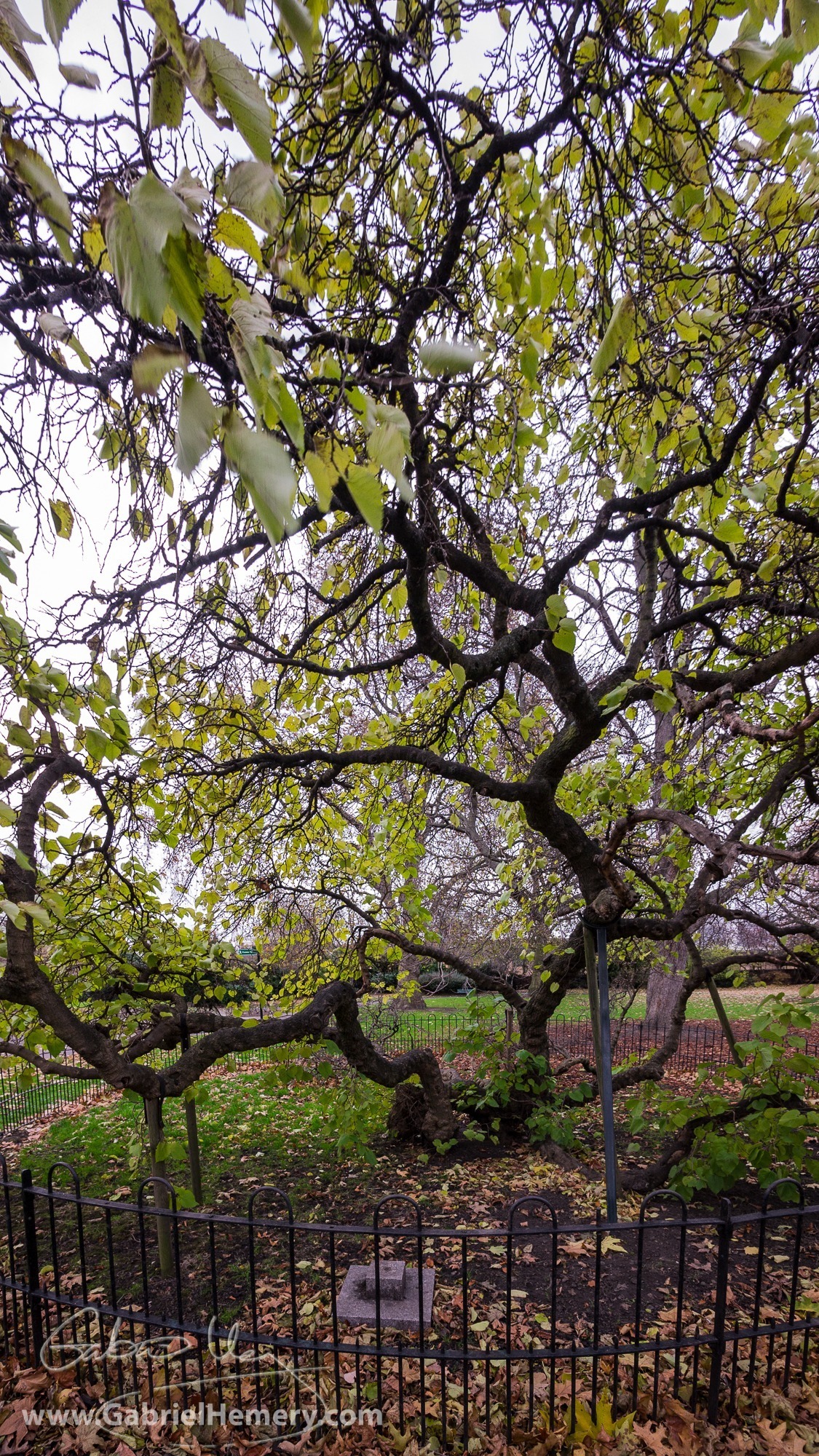
In the centre of the garden is an ancient mulberry tree, surrounded by a circular iron railing fence. Karen Liljenberg’s excellent blog about Sayes Court Garden, includes some specific comments and ideas for the actual origins of the mulberry tree that survives today in the garden. Karen argues that it seems unlikely that the tree is a remnant of the Tsar Peter I of Russia, as legend leads us to believe, as it is he that is largely blamed for the demise of the garden in 1698. Instead I would agree that it is more likely that the mulberry tree is a surviving remnant of Evelyn’s garden (read more). Earlier this year a large stem of the tree broke off (as evident from only recently wilted leaves) – perhaps a dendrochronologist could be persuaded to sample this stem and at least we would find out how old that part of the tree is. Naturally, it is quite possible that the very low main bole is older than all the stems that now grow from it, making the tree difficult to age accurately.
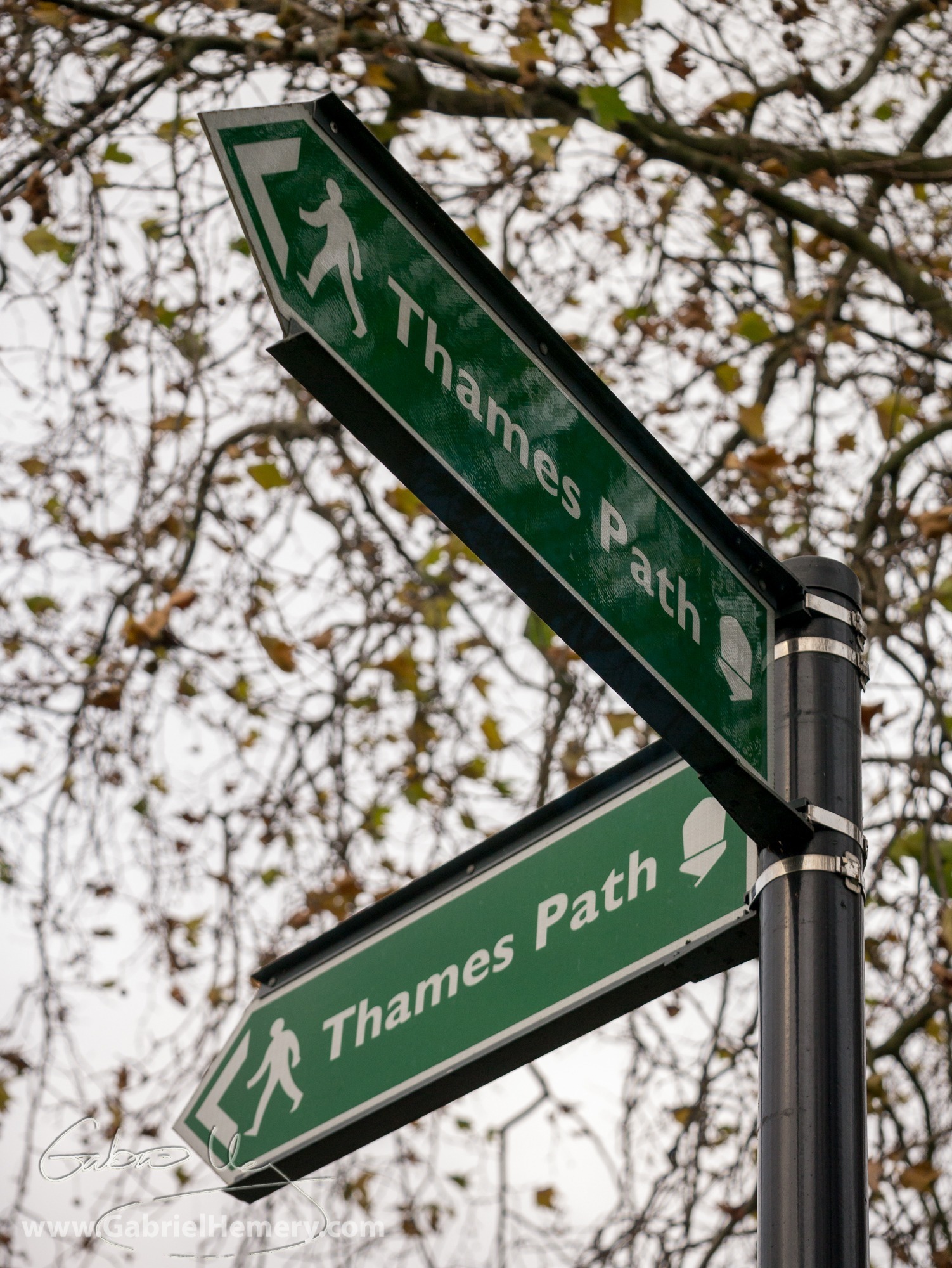
It is well worth visiting the garden, despite its small size and low-key presence. Even though there is not much to see, there is a sense of history, which is much enhanced if a little research has been undertaken before visiting the area. Let’s hope that some of the current ideas for celebrating the great heritage of the site (see more below) come to something.
With thanks to my friend Steve for his inspiration and companionship.
Further reading:
The Garden History Society
Sayes Court and the formation of the National Trust
Sayes Court – London’s Lost Garden
 This work is licensed under a Creative Commons Attribution- NonCommercial- NoDerivs 3.0 United States License.
This work is licensed under a Creative Commons Attribution- NonCommercial- NoDerivs 3.0 United States License.

How interesting. Glad to see that there is someone who can appreciate the original setting of the park. One thing though – Deptford is South East London not East London. A mistake the BBC frequently makes.